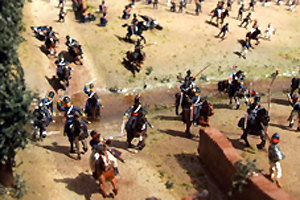Central Nervous System
It carries out all the superior functions of the human being, such as the cognitive and emotional functions (to think, to reason, memory, emotions, etc.). It is formed by the encephalon and the spinal cord.
The former is composed by the cerebrum (main brain mass), the cerebellum (coordinates motor activities) and the brainstem (joins the spinal cord to the brain).
The spinal cord is a nervous cord that is formed by 31 pairs of spinal nerves that connect it to the rest of the body.
One of its functions is to carry information between the spinal nerves and the brain.
Peripheral Nervous System
It consists of nerves (motor and sensory bundles of fibers) that connect the central nervous system to the other parts of the body.
This system is also formed by ganglia (groups of nerve cells located in various points of the organism) and the nerve plexuses.
All together, 43 pairs of major nerves emerge from the central nervous system: 12 pairs from the lower part of the brain (cranial nerves) and innervate the head and the neck, and 31 pairs from the spinal cord (spinal nerves) that supply the rest of the body.







 Batalla de Lircay
Batalla de Lircay